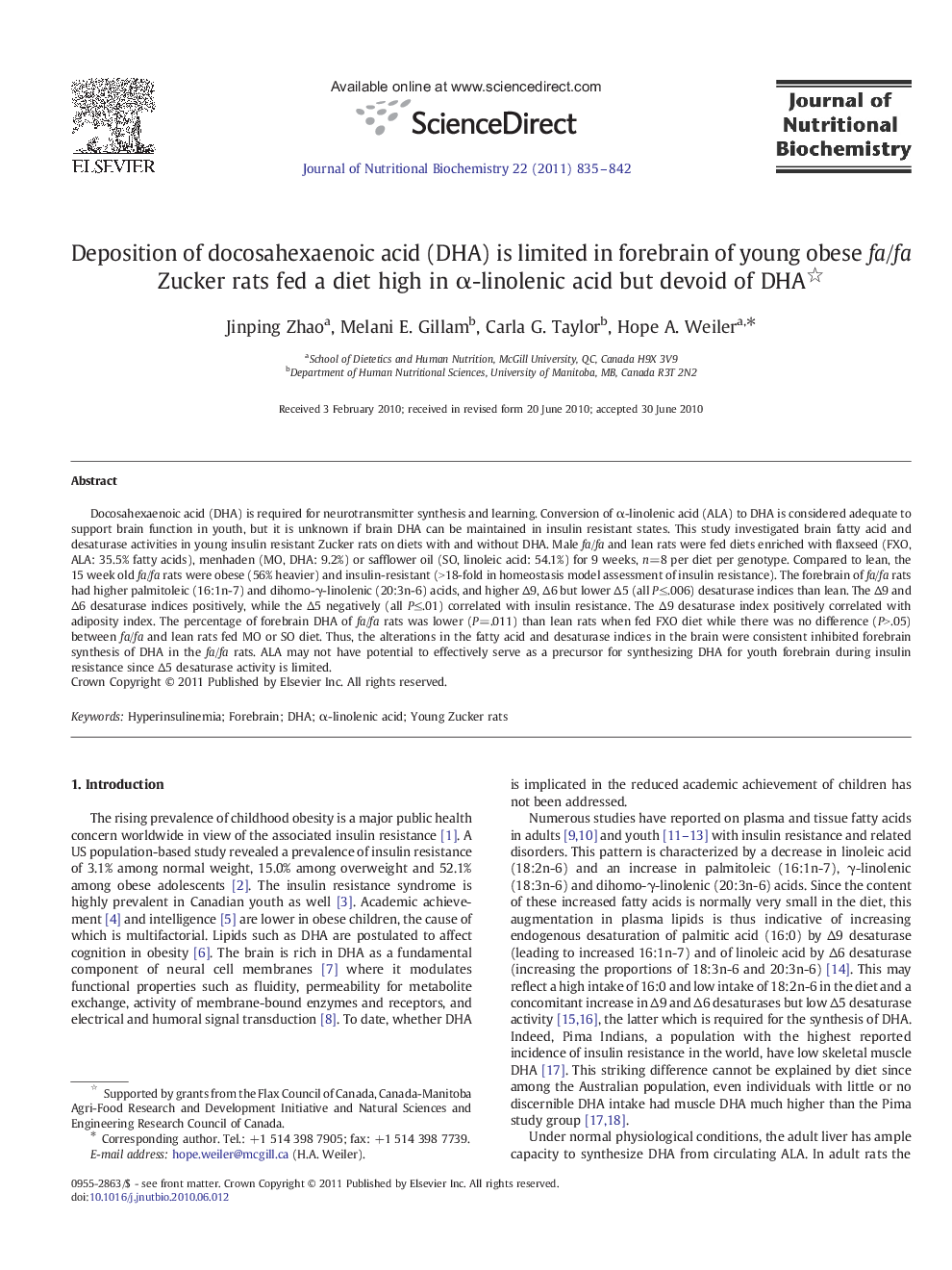| Article ID | Journal | Published Year | Pages | File Type |
|---|---|---|---|---|
| 1990620 | The Journal of Nutritional Biochemistry | 2011 | 8 Pages |
Docosahexaenoic acid (DHA) is required for neurotransmitter synthesis and learning. Conversion of α-linolenic acid (ALA) to DHA is considered adequate to support brain function in youth, but it is unknown if brain DHA can be maintained in insulin resistant states. This study investigated brain fatty acid and desaturase activities in young insulin resistant Zucker rats on diets with and without DHA. Male fa/fa and lean rats were fed diets enriched with flaxseed (FXO, ALA: 35.5% fatty acids), menhaden (MO, DHA: 9.2%) or safflower oil (SO, linoleic acid: 54.1%) for 9 weeks, n=8 per diet per genotype. Compared to lean, the 15 week old fa/fa rats were obese (56% heavier) and insulin-resistant (>18-fold in homeostasis model assessment of insulin resistance). The forebrain of fa/fa rats had higher palmitoleic (16:1n-7) and dihomo-γ-linolenic (20:3n-6) acids, and higher Δ9, Δ6 but lower Δ5 (all P≤.006) desaturase indices than lean. The Δ9 and Δ6 desaturase indices positively, while the Δ5 negatively (all P≤.01) correlated with insulin resistance. The Δ9 desaturase index positively correlated with adiposity index. The percentage of forebrain DHA of fa/fa rats was lower (P=.011) than lean rats when fed FXO diet while there was no difference (P>.05) between fa/fa and lean rats fed MO or SO diet. Thus, the alterations in the fatty acid and desaturase indices in the brain were consistent inhibited forebrain synthesis of DHA in the fa/fa rats. ALA may not have potential to effectively serve as a precursor for synthesizing DHA for youth forebrain during insulin resistance since Δ5 desaturase activity is limited.
